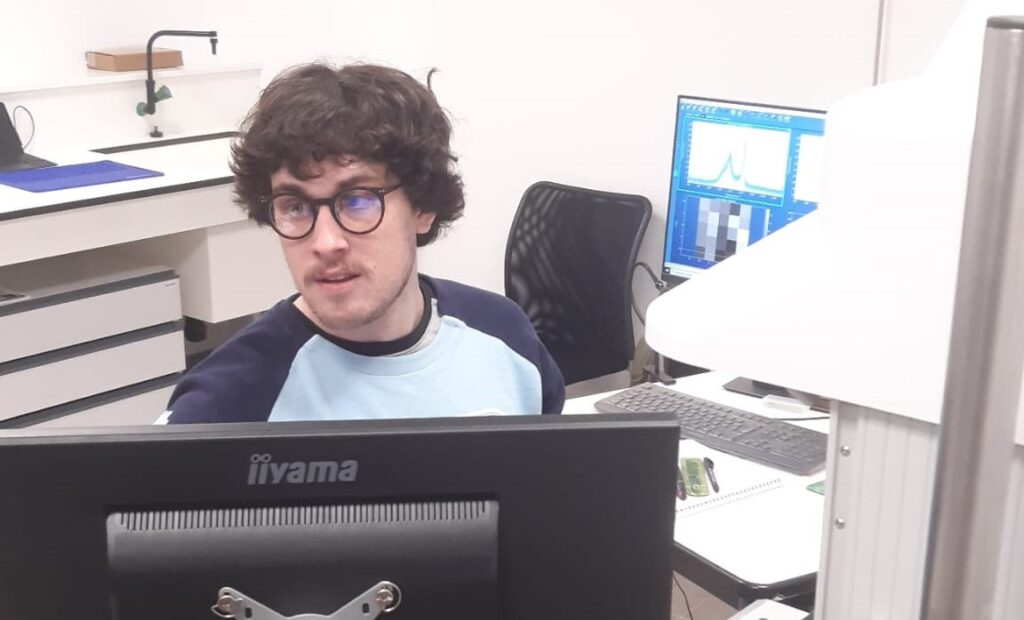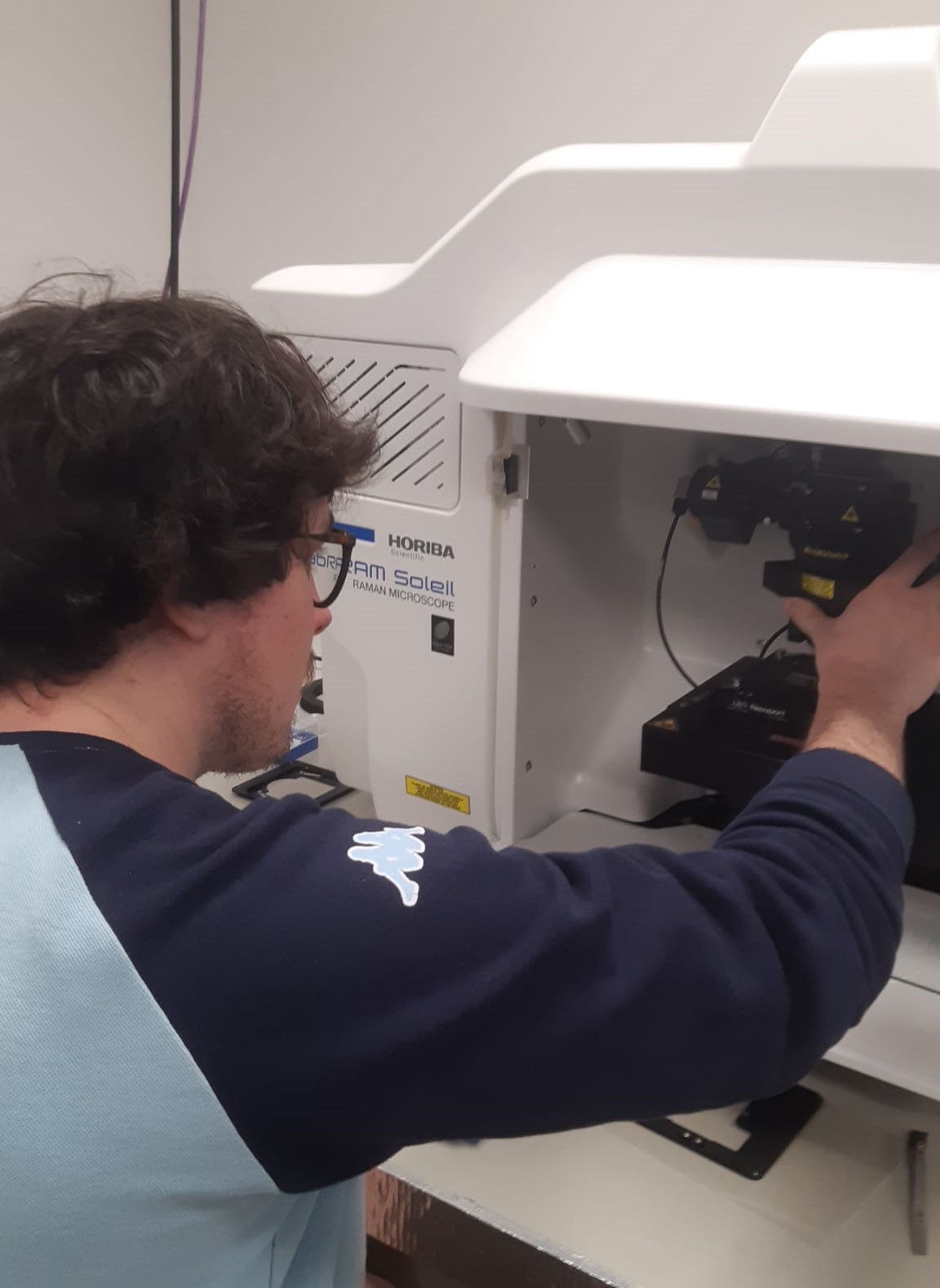Portrait of a doctoral student : Camille Delarue
From Poitiers to Lyon, via Nantes

After graduating with a scientific baccalauréat in 2018, Camille Delarue went to Poitiers to start a geology degree, driven by a professional project aimed at research in paleontology. During these three years, paleontology gradually gave way to geology, physics and, finally, planetology. It was at this point that his entourage advised him to apply to Nantes University, which offered a master’s degree focused on this field.
Accepted into this Master’s program, he first completed his Master 1 internship in Nantes. During this time, Camille worked with Olivier Bollengier, Senior Lecturer at Nantes Université, Pauline Lévêque, PhD student at LPG and Erwan Le Menn, Research Engineer at LPG. Christophe Sotin, University Professor at Nantes and principal investigator of the Promises ERC, then informed him of a proposed internship topic, in collaboration between the Laboratoire de Planétologie et Géosciences in Nantes, the ENS in Lyon and the Laboratoire de Géologie de Lyon. The application was accepted, and the Master 2 internship took place in Lyon and Nantes, under the joint supervision of Bruno Reynard, CNRS Research Director at the Laboratoire de Géologie de Lyon, and Christophe Sotin. The subject of this internship was the study of the evolution of organic matter on the solar system’s icy moons.
Thesis: Experimental modeling of the evolution of terrestrial and extraterrestrial carbonaceous matter

In October 2023, following her Master 2 internship, Camille will start her thesis at the Laboratoire de Géologie de Lyon. This thesis is financed by the ENS de Lyon and supervised by the PHAST doctoral school in Lyon. “In a way, it is the continuation of the Master 2 internship,” explains the doctoral student. Indeed, the idea behind this thesis is as follows:
The icy moons orbiting Saturn and Jupiter have a high organic matter content, i.e. mainly carbon, hydrogen and oxygen, but also nitrogen and sulfur in varying quantities. As it happens, this organic matter evolves mainly as a function of the pressure and temperature of its environment. Under certain conditions, the most volatile atoms (oxygen and hydrogen) will separate from the carbon to form gases that will join the upper layers of the moon. As these volatiles are lost, what remains of these conglomerates of organic matter will become increasingly dense, reaching a composition and density close to that of graphite. These changes in density have had a major impact on the internal composition of ice moons over the course of their history, and this is surely still the case today. An understanding of these mechanisms would, among other things, shed light on the formation of ice moons.
For this study, Camille Delarue tells us that “to do this, we need material similar to that found in meteorites and comets, which is quite rare.” To overcome this, the teams Camille is part of are working on so-called analogues, similar materials, which in our case happen to be terrestrial coals. Charcoal seems a good choice, as it behaves in a similar way to the organic matter that might be found on icy moons. On top of that, it’s an abundant material on Earth, which exists in many forms, offering vast possibilities for analysis. It’s also a material that has been studied extensively, enabling the existence of a great deal of data that is already available. The “terrestrial and extraterrestrial” aspect of Camille’s thesis is precisely present in the study of these coals. Indeed, while the main idea is to study ice moons, the work, being carried out on coals, enables us to find models that are also applicable to terrestrial domains.
Camille is more on the experimental side of the team. In particular, he uses Raman spectroscopy to study matter based on its interaction with a laser, Scanning Electron Microscopy (SEM) to make very precise observations, and chemical analysis using an EDX detector. This uses X-rays to characterize the elements observed. Camille also uses diamond anvil cells for high pressure, and LIBS, which he will be using in the near future. LIBS is laser-induced breakdown spectroscopy. It involves using a laser to “vaporize” the sample, and then identifying the small particles that have been ionized and suspended by the spectroscopy. The composition of the sample can then be determined.
Interconnected work
One of the aspects Camille finds “super cool” is the possibility of making different connections in his research work. Indeed, his subject is very close to the thesis topic of Pauline Lévêque, with whom he had the opportunity to work several times during the Master 1 and 2 internships. The advantage is that they are both experimenters, so methods, results and thoughts can be exchanged between the two PhD students. Another possible connection is with Mathis Pinceloup, a doctoral student in the ERC Promises project, “we started our thesis at the same time, in two different laboratories and on two more or less complementary subjects”, he tells us. Where Camille will be doing experimental work, Mathis will be doing modeling. Even though their two thesis subjects are quite different, here too, results and data can be exchanged, resulting in truly complementary work and a diversity of methods.
PUBLISHED ON FEBRUARY 22ND, 2024

